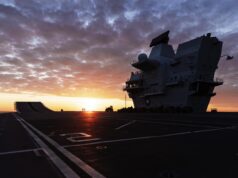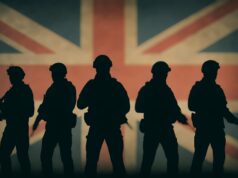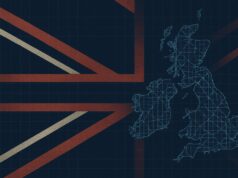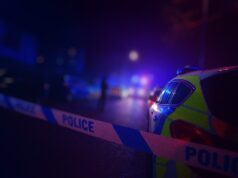Raytheon UK has unveiled its preparations to test and integrate a high-energy laser weapon system at a freshly inaugurated facility in Livingston, Scotland.
Following rigorous testing and optimisation, the laser system will be handed over to the UK Ministry of Defence.
This innovative system will be fixed onto a Wolfhound military vehicle, signifying an important evolution in the country’s military capabilities.
Raytheon UK’s newest laser system is specifically designed to counter aerial threats, prominently unmanned aerial vehicles (UAVs). This 15-kilowatt laser is a product of the UK Ministry of Defence’s Land Demonstrator programme.
Notably, the Ministry had entered into an agreement with Raytheon UK back in 2021 to design and install this laser weapon on a Wolfhound armored vehicle.
“The arrival of this transformative technology is an important milestone in our collaboration with the MoD on using directed energy to address a variety of threats, from drones and UAVs to more complex missile systems,” stated Julie Finlayson-Odell, Raytheon UK’s managing director of weapons and sensors.
She further emphasised the company’s dedication towards the UK’s Integrated Review goals, which seeks a comprehensive understanding of the operational dynamics of directed energy weapons within the UK’s military framework.
This high-energy laser system has already proved its reliability in various field tests, exhibiting resilience in extreme weather scenarios like intense heat, chilling cold, and even during precipitation. In a span of four days, during live-fire exercises held in the US, this system effectively locked onto and neutralised multiple drone targets under various conditions.
This laser system’s delivery aligns with the inauguration of Raytheon UK’s state-of-the-art laser integration centre in Livingston, Scotland, dedicated to the testing, fielding, and maintenance of defensive laser weaponry. This centre, unveiled in July 2022, is strategically placed to ensure that laser weapons can be promptly deployed, maintained, and repaired.














The US forces have the same kit but on a pick up truck. The UK kit is a derivative.
High-Energy Lasers | Raytheon (rtx.com)
If you are testing its effectiveness on a low slow drone target for the Army do it on a wet Wednesday morning in December in Sennybridge not in crystal clear air that’s dry and thin (nearly 1 mile altitude) during the early evening in New Mexico.
US Forces and their sub cons have previous for testing weapons in premium and to be honest fudged conditions that provide irrelevant real world data. They have been caught out by Comptrollers (Auditors) for conducting trials and stroking the results to move programs forward knowing that the test results where useless for weapon system analysis.
Raytheon admits that it cancelled tests if the weather was not ideal. The laser systems range (from the 10kw test bed data) is going to be 3-4 Km and you will need 8 -15 second dwell time on the target. So its going to be for slow quadcopters/ fixed wing drones. The flashy CGI videos of quick firing pulses of laser energy downing 10s of targets in a few seconds are hype and far from realistic.
Hands on with Raytheon’s anti-drone laser weapon | Popular Science (popsci.com)
“And not just in the clear, sunny skies of New Mexico, but in the windy, rainy, and foggy conditions in Florida that would normally make for a bad day for the lasers. But the HEL-MD still managed to deal with its targets, including 60 mm mortars and unmanned aerial vehicles (UAV).”
https://newatlas.com/boeing-laser-directed-energy-weapon-fog/33672/
https://assets.newatlas.com/dims4/default/3185aec/2147483647/strip/true/crop/3796×2700+0+0/resize/800×569!/quality/90/?url=http%3A%2F%2Fnewatlas-brightspot.s3.amazonaws.com%2Farchive%2Fboeing-laser-fog-1.JPG
Quick maths, the generator in that image is 3/4 the width and 20% of the length of the vehicle. A Wolfhound is 7.08m by 2.74m, that would make it 2.055m wide, 1.416m long and 1.2m tall. So yeah image is consistent with a modified commercially available unit.
The current technology is totally different based on the big advances in very pure glass optical fibre used for data cables. Bundle the fibres together and thats what we have now
*Argon gas* was a dead end ,didnt lead anywhere as it couldnt scale like they do now , with lower power
as solid state diodes used now as light generators and the optical fibre concentrates the beam far better than mirrors and such
This might explain the current tech far better than I could
https://www.orc.soton.ac.uk/how-fibre-lasers-work
Your Falklands information shows that they werent anywhere near being used as destructive weapons , just dazzlers against eyes and such.
https://newatlas.com/falklands-laser/28574/
Nice to see this type of system- tested in dry desert of New Mexico and the high humidity and wet coastal Florida make progress
A commercial type generator for 16kVA and packaged in silencing and with forklift and crane supports is about 630kg plus LxWxH 1802 x 752 x 1130mm
So is this a generally UK developed system or is it a GD US system that is being assessed for UK service with some production and support services in Livingston?